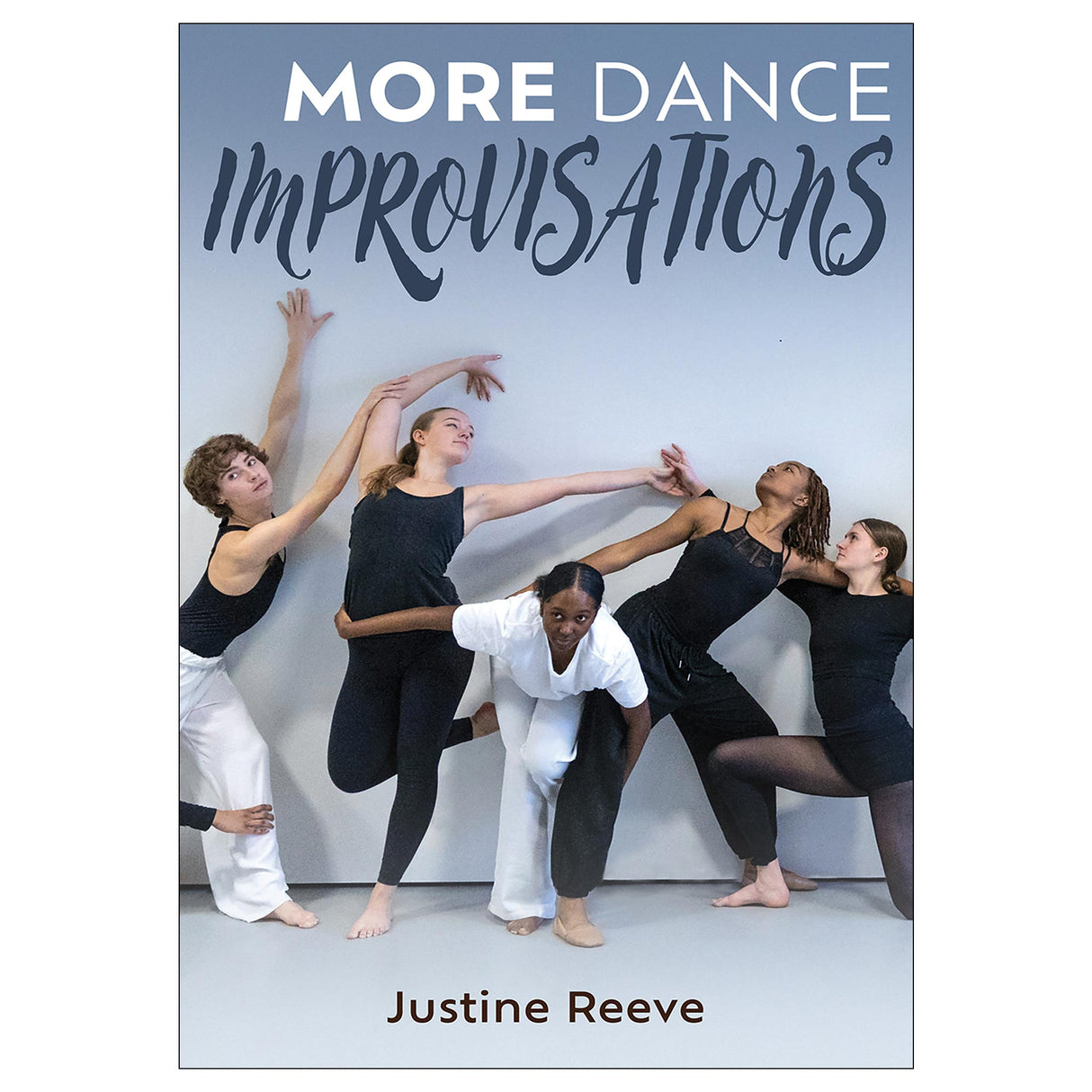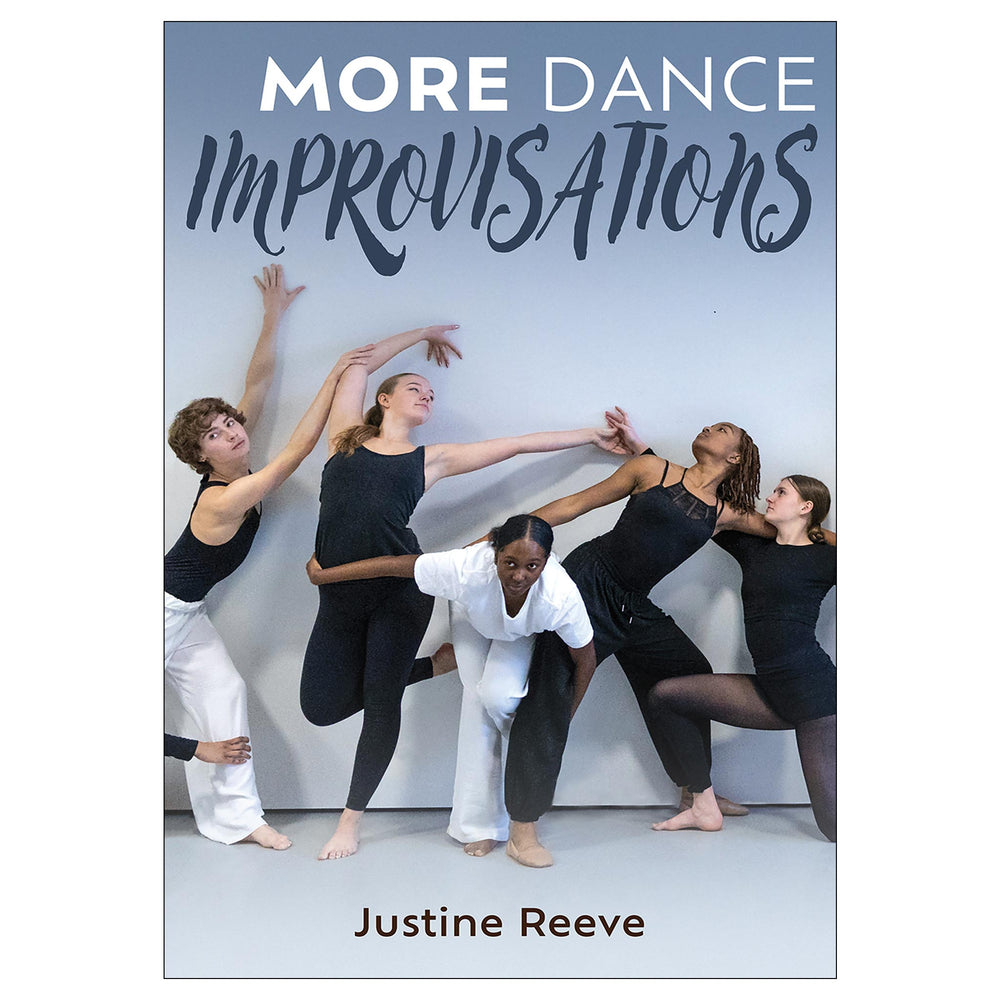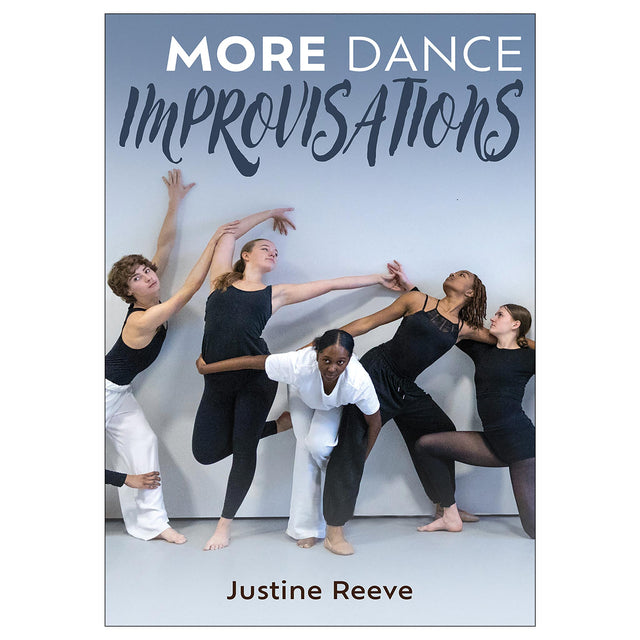Paperback
More Dance Improvisations
Author: Justine Reeve
$39.00 USD
Unit price
/
Unavailable
Paperback
$39.00 USD
$39.00 USD
Paperback
More Dance Improvisations builds on the success of its predecessor, Dance Improvisations, and offers 78 brand-new activities that have been tested and refined by author Justine Reeve, a veteran dance instructor and choreographer.
This text offers a wealth of creative ideas that instructors can use to help their dancers explore and experience movement. The 78 improvisation tasks and exercises support all portions of a dance class, from improvisation lessons, warm-ups, and games that stimulate creativity to choreographic tasks for creating movement material. These new activities will provide an invaluable source of creative ideas for all dancers, including those who are exploring their own professional practice.
More Dance Improvisations offers
After an introductory chapter that covers many important topics on conducting safe and effective practices and workshops and on how to use the book, the text moves into its first set of improvisations: warm-up games. These games develop quick thinking, group thinking, movement communication, and an awareness of the needs and movements of others.
The next two chapters explore solo and duo improvisations as well as group creative tasks. Each improvisation task has a brief description, an image, numbered tasks for clarity, a teaching tip, and ideas to take the task further or develop the dance idea as appropriate.
Chapter 5 explores how the physical and aural setting can lead to creating interesting and considered dance. Chapter 6 encourages dancers to use movements, phrases, and sequences created in previous tasks to develop and structure the movement material into something new.
“These games, tasks, ideas, stimuli, and developments are here to give instructors and students a little push to find creative vision, explore movement, and discover how these ideas can be developed, adapted, and structured,” says Reeve. “Instructors will find new ways to help their dancers create original movements through both individual and group activities, and students will gain inspiration through using these improvisations.”
More Dance Improvisations promotes creativity that leads to innovative breakthroughs for students from middle school through college. It is the perfect resource to help dancers enjoy their exploration of movement and dance as they gain greater awareness of the capabilities they possess.
This text offers a wealth of creative ideas that instructors can use to help their dancers explore and experience movement. The 78 improvisation tasks and exercises support all portions of a dance class, from improvisation lessons, warm-ups, and games that stimulate creativity to choreographic tasks for creating movement material. These new activities will provide an invaluable source of creative ideas for all dancers, including those who are exploring their own professional practice.
More Dance Improvisations offers
- expert instruction in planning, teaching, and assessing students’ improvisations;
- a choreographic toolkit and glossary of dance and choreographic terms;
- step-by-step instruction and teaching tips that will save instructors preparation time; and
- extensions of each improv to aid further exploration and development of the improvisation skills.
After an introductory chapter that covers many important topics on conducting safe and effective practices and workshops and on how to use the book, the text moves into its first set of improvisations: warm-up games. These games develop quick thinking, group thinking, movement communication, and an awareness of the needs and movements of others.
The next two chapters explore solo and duo improvisations as well as group creative tasks. Each improvisation task has a brief description, an image, numbered tasks for clarity, a teaching tip, and ideas to take the task further or develop the dance idea as appropriate.
Chapter 5 explores how the physical and aural setting can lead to creating interesting and considered dance. Chapter 6 encourages dancers to use movements, phrases, and sequences created in previous tasks to develop and structure the movement material into something new.
“These games, tasks, ideas, stimuli, and developments are here to give instructors and students a little push to find creative vision, explore movement, and discover how these ideas can be developed, adapted, and structured,” says Reeve. “Instructors will find new ways to help their dancers create original movements through both individual and group activities, and students will gain inspiration through using these improvisations.”
More Dance Improvisations promotes creativity that leads to innovative breakthroughs for students from middle school through college. It is the perfect resource to help dancers enjoy their exploration of movement and dance as they gain greater awareness of the capabilities they possess.
Audience
Resource for dance teachers, dance workshop leaders, dance students, dance artists, performing arts college lecturers—anyone who delivers dance or movement and has students developing their creative movement responses and choreographic practice. Chapter 1. Introduction and How to Use This Book
This chapter explores how to use this book, warming up and safe practice, effective planning, top tips for dance improvisation, planning your workshop, inclusive practice, and finding the right music, musicality, phrases and a table of improvisations.
Chapter 2. Warm-Up Games and Tasks
This chapter explores the concepts of play and spontaneous movement as stimuli for warming up the body and preparing the mind for new experiences. The games and improvisations within will prepare dancers for the creative tasks ahead, improve reaction times and explore key features of movement.
Chapter 3. Solo and Duo Improvisations
This chapter explores the movement responses dancers can generate on their own and with partners. Through these tasks, they’ll discover spontaneous movement answers that will develop, challenge and refine their creative responses, solo or in duos.
Chapter 4. Group Creative Tasks
This chapter explores the movement responses dancers can generate in groups. By working with others, they can explore and discover new movement ideas. The tasks within aim to develop, challenge and refine creative responses and the feeling of working as a team that comes with making group decisions in the moment.
Chapter 5. Moving Beyond the Kinaesthetic: Using Physical and Aural Improvisation Tasks
This chapter explores how starting with elements of physical and aural settings can lead students to create interesting dance. It acts as a taster for being inspired by external stimuli and will hopefully inspire an abundance of future ideas.
Chapter 6. Developing Improvisations
This chapter encourages dancers to use the movements, phrases and sequences created in previous tasks to play with development and structuring to manipulate the movement material. They can also develop ideas using existing material and repertoire. These are only a few suggestions to inspire additional ideas on how to develop movements into dance pieces or works.
This chapter explores how to use this book, warming up and safe practice, effective planning, top tips for dance improvisation, planning your workshop, inclusive practice, and finding the right music, musicality, phrases and a table of improvisations.
Chapter 2. Warm-Up Games and Tasks
This chapter explores the concepts of play and spontaneous movement as stimuli for warming up the body and preparing the mind for new experiences. The games and improvisations within will prepare dancers for the creative tasks ahead, improve reaction times and explore key features of movement.
Chapter 3. Solo and Duo Improvisations
This chapter explores the movement responses dancers can generate on their own and with partners. Through these tasks, they’ll discover spontaneous movement answers that will develop, challenge and refine their creative responses, solo or in duos.
Chapter 4. Group Creative Tasks
This chapter explores the movement responses dancers can generate in groups. By working with others, they can explore and discover new movement ideas. The tasks within aim to develop, challenge and refine creative responses and the feeling of working as a team that comes with making group decisions in the moment.
Chapter 5. Moving Beyond the Kinaesthetic: Using Physical and Aural Improvisation Tasks
This chapter explores how starting with elements of physical and aural settings can lead students to create interesting dance. It acts as a taster for being inspired by external stimuli and will hopefully inspire an abundance of future ideas.
Chapter 6. Developing Improvisations
This chapter encourages dancers to use the movements, phrases and sequences created in previous tasks to play with development and structuring to manipulate the movement material. They can also develop ideas using existing material and repertoire. These are only a few suggestions to inspire additional ideas on how to develop movements into dance pieces or works.





